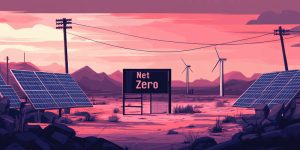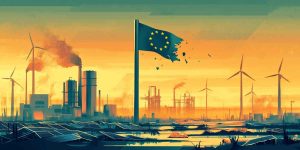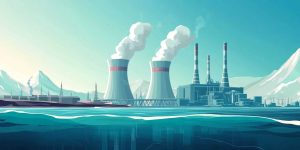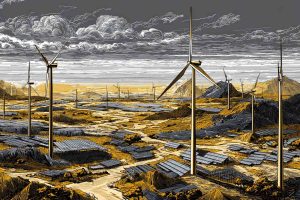The renewable delusion: why “green” energy isn’t as clean or superior as claimed
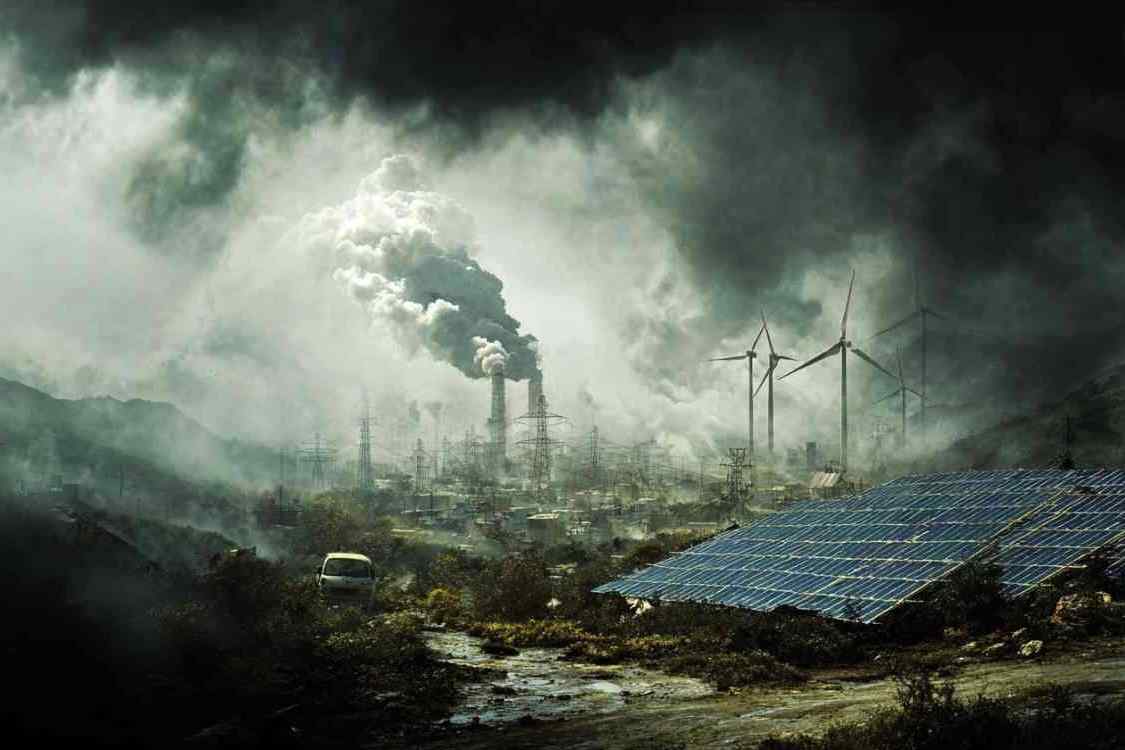
A question of naming: why “renewable” is a misleading term
The term renewable energy implies a kind of perpetual motion fantasy, a source of power that never runs out and causes no harm. Solar panels bask under the sun, wind turbines spin serenely on the horizon, and hydropower hums through valleys. These images are designed to convey cleanliness, sustainability, and harmony. But the reality is that so-called renewables are everything but.
Unlike what the term suggests, renewable technologies rely on massive industrial infrastructure, rare earth minerals, enormous energy inputs during production, and cause considerable environmental damage during extraction and disposal. Their intermittency means they cannot function independently, requiring fallback systems and vast land use to maintain even a fraction of modern energy needs.
Meanwhile, traditional energy sources like coal, gas, and nuclear have been painted as the villains of modern history, blamed for environmental destruction, climate change, and geopolitical tension. Yet this dichotomy is intellectually dishonest. Traditional energy sources have powered the world reliably, scalably, and with technological improvements, have become much cleaner and more efficient than they once were. The vilification of fossil fuels and nuclear has become less about scientific objectivity and more about ideology.
The dirty secrets of “clean” energy
Solar panels: from toxic mining to waste management
Solar panels may not emit greenhouse gases during operation, but their production tells a different story. Manufacturing photovoltaic (PV) panels involves the mining and refining of quartz to extract silicon. This process releases silicon tetrachloride, a highly toxic byproduct that can devastate local ecosystems when improperly handled. In China, where most global solar panels are produced, environmental regulations are lax and workers are often exposed to dangerous conditions (The Dark Side of Solar Panels, Rosenthal).
Furthermore, modern solar panels rely on rare earth metals such as tellurium, indium, and gallium, which are mined in regions with poor labor and environmental standards. Mining for these materials often displaces communities, poisons water supplies, and degrades soil (Rare Earth Frontiers, Ali).
After 25 to 30 years of operation, most solar panels become waste. Yet the world lacks a large-scale infrastructure for PV recycling. In 2020, the International Renewable Energy Agency projected that up to 78 million tonnes of solar panel waste could be generated globally by 2050 (End-of-Life Management, IRENA). This looming waste crisis undermines the illusion of sustainability.
Wind power: industrial sprawl and ecological destruction
Wind turbines require huge quantities of concrete, steel, copper, and rare earth magnets such as neodymium. Manufacturing and installing one modern wind turbine demands hundreds of tons of material, making their upfront carbon footprint significant. While they may pay back this carbon debt during their operational life, the materials are not renewable.
Wind farms consume vast land areas. In the United States, the land needed to generate one terawatt-hour of electricity from wind is around 72 times greater than that for nuclear power (Power Density, Smil). The environmental impact of this land use is far from benign. Wind turbines are known to kill birds and bats in large numbers. A 2013 study estimated up to 888, 000 bat deaths per year in the U.S. alone (Estimates of bird and bat mortality, Arnett).
Moreover, the noise pollution and visual impact of wind farms have triggered community resistance across Europe and the U.S., leading to the term “Not in My Backyard” (NIMBY) becoming associated with renewable projects rather than fossil fuels.
Batteries: the lithium curse
Because solar and wind are intermittent, energy storage is necessary to smooth out supply. This has led to a global obsession with lithium-ion batteries. But lithium extraction is anything but green. Mining lithium from salt flats in South America involves pumping brine from underground reservoirs and evaporating it in large pools. This consumes immense quantities of water, threatening local agriculture and wildlife (The Lithium Triangle, Kavanagh).
In Chile’s Salar de Atacama, mining uses 65 percent of the region’s water, resulting in declining vegetation and desertification (Lithium Mining and Water, Environmental Justice Atlas). Child labor and unsafe working conditions have been reported in cobalt mining in the Democratic Republic of Congo, another key element in battery production (This is what we die for, Amnesty International).
Even if lithium batteries were produced cleanly, their lifespan is limited. Disposal is hazardous, and recycling is not economically viable at scale. As with solar panels, this generates an environmental time bomb.
The myth of carbon purity: renewables still pollute
Many advocates point to carbon emissions as the primary metric of energy cleanliness. But this single-variable approach obscures a broader set of harms. The life-cycle emissions of renewables are often underestimated. Building a wind turbine or solar panel emits CO₂ during mining, smelting, manufacturing, transportation, and installation. These emissions are frontloaded and usually outsourced to countries with lax environmental standards.
Life-cycle analyses from the Intergovernmental Panel on Climate Change show that while wind and solar produce less CO₂ per kilowatt-hour than coal or gas, they are not carbon-free. For example, solar photovoltaic systems emit around 41 grams of CO₂ per kilowatt-hour when including production and disposal (Special Report on Renewable Energy Sources, IPCC).
Additionally, renewables often require backup from fossil fuels. Because the sun doesn’t always shine and the wind doesn’t always blow, many countries keep gas-fired plants running as a “spinning reserve” to maintain grid stability. This redundancy leads to inefficiencies and paradoxically sustains the fossil fuel industry.
Traditional energy sources: not as evil as claimed
Coal: outdated but misunderstood
Coal is the dirtiest of all energy sources in terms of carbon emissions, but it also built the modern world. It powered the Industrial Revolution, lifted billions out of poverty, and still provides 36 percent of global electricity (as of 2024). Its predictability, energy density, and local availability make it a stable cornerstone of many economies.
Modern coal plants are not what they were in the 1950s. Technologies such as flue-gas desulfurization, particulate filters, and fluidized bed combustion have reduced pollutants drastically (Clean Coal Technology, IEA). While coal remains problematic from a climate perspective, it is often still more reliable and cheaper than intermittent renewables in developing nations.
Natural gas: the misunderstood transition fuel
Natural gas emits about half as much CO₂ as coal and produces virtually no mercury or sulfur dioxide. It also complements renewables well, because gas plants can ramp up quickly when solar or wind drop off.
Fracking has been demonized, but many of the early environmental concerns have been addressed through improved well casings, better regulations, and reduced methane leakage (Fracking and the Environment, Molofsky). In fact, the U.S. reduction in CO₂ emissions since 2005 has been driven largely by switching from coal to gas, not by solar or wind adoption.
Nuclear: the cleanest and safest misunderstood source
Nuclear energy is the elephant in the room. It produces zero greenhouse gas emissions during operation, has the highest energy density of any source, and requires minimal land. A single pellet of uranium yields as much energy as one ton of coal. Yet it has been unfairly demonized.
The fear surrounding nuclear stems from high-profile accidents like Chernobyl and Fukushima. But statistically, nuclear is the safest form of energy per terawatt-hour produced, with the fewest deaths when factoring in accidents, cancer, pollution, and occupational hazards (Death Rates From Energy Production, Ritchie).
Nuclear waste is manageable and highly regulated. Unlike the dispersed, unregulated waste from solar or battery systems, nuclear waste is tracked, stored, and contained. Advanced reactor designs and fuel recycling technologies promise to make nuclear even safer and more efficient (The Future of Nuclear Energy, MIT).
Energy return on investment: the Achilles heel of renewables
A crucial but overlooked concept in energy policy is the energy return on energy invested (EROEI). It measures how much usable energy is gained from an energy source compared to the energy required to extract or build it.
Oil has historically had EROEI values of 30:1 or more, meaning thirty units of energy for every one spent. Coal and gas remain around 20:1. Nuclear, despite high initial costs, offers up to 75:1 when fully optimized (EROI of Global Energy Resources, Hall).
In contrast, wind and solar have far lower EROEI values. Solar panels in Germany, for instance, may return only 4:1 to 7:1 due to low sunlight levels and high maintenance costs. When factoring in backup systems, transmission losses, and storage inefficiencies, this return may fall further.
Low EROEI means societies must devote more of their energy budget to just maintaining the system, leaving less surplus for transportation, agriculture, or manufacturing. Civilizations are built not on energy access alone, but on surplus energy.
The politics of green energy: follow the money
The promotion of renewables is not just about climate. It is a trillion-dollar industry heavily dependent on subsidies, tax credits, and regulatory favoritism. Solar and wind companies survive largely due to government support. In Germany, the Energiewende program has spent over €500 billion since 2000 with marginal effects on emissions, while electricity prices have become among the highest in Europe (The German Energiewende, Frondel).
Meanwhile, fossil fuel and nuclear industries face carbon taxes, divestment campaigns, and public demonization. The narrative is shaped not just by science but by lobbying, ideology, and vested interests.
Environmental NGOs, green tech companies, and even oil majors have stakes in renewables. Shell and BP, for instance, have invested in wind and solar, not out of altruism but to hedge their portfolios and benefit from subsidies. The green label sells well in public relations.
Conclusion: energy realism over energy idealism
Renewables are not evil, but they are also not the panacea they are often made out to be. They depend on mining, rare earths, fossil-fuel infrastructure, and create their own forms of waste and environmental harm. Traditional sources, while imperfect, offer stability, density, and scalability. Rather than dogmatically chasing green dreams, societies should pursue an energy mix based on engineering realities, not utopian slogans.
The real question is not whether energy is renewable, but whether it is reliable, efficient, and affordable. On that metric, traditional energy, especially nuclear and gas, still outcompete wind and solar. The future must be built on realism, not virtue signaling.



